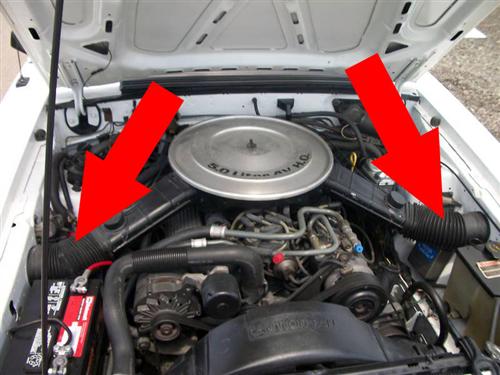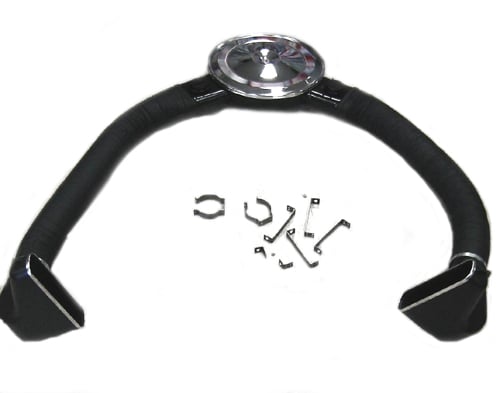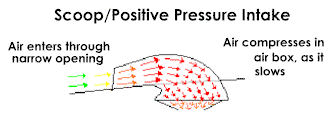For whatever reason, once I realized that with the hood I’m getting for my Cougar is one I will free to drill, or in this case cut, I got a bee in my bonnet for switching to an alternative air induction scheme.
The first thing I thought was ram air via a functional scoop as was available on cougars in 68. But with all I’ve read and heard from people who had them about how rain becomes a problem, even though I don’t deliberately take my cougar out in the rain, I was still a little put off on the idea.
What I’ve come up with is pretty interesting, to me anyway. All I have are rough drawings so far, and a layout in my mind that’s a little fuzzy still but fairly well laid out.
I want to build a cowl induction rise to the hood, and have a plan for trapping water at least a bit and routing it to drain into an area that doesn’t have anything sensitive like anything electrical or the exhaust manifolds or anything.
But that’s not enough! I also want to implement ram air, just not via the standard method. I’m going to take the front valence from the donor car and cut out most of the center area of it, and build (or buy if I can find the right part) an air collector for each side that has something like 3" tall and maybe 1.5’ wide opening that funnels down to a hose of diameter that is TBD. The hoses would then each run under the core support (that’s the name of the structural member the radiator sits on, right?) and up along the inner fender walls and go to holes in the base of the air cleaner housing. I’ll be using the air cleaner housing from the donor car if it has one and it’s in good enough shape to work with.
The thing that seems really good about that method of achieving ram air is that with the intake scoops that low down, under the bumper, and the air cleaner much higher up, then any rain or road water that gets taken in the scoops would have to fight gravity to get into the carb. So, hopefully it reduces that issue.
Also, totally gonna add the chin spoiler which hopefully can both generate a little downforce up front and also push more air into the ram inlets
Anyone ever done this before, use both cowl and ram air at the same time? Any issues with it? My first thought was that either the cowl or ram intakes might have much more air pressure than the other, so one might end up trying to push air out the other, reducing the effectiveness of one or even both. But then when I think about it, the point where the two systems merge is inside the air cleaner, and at that point, doesn’t the vacuum created at the carb’s air inlet create a very clear path of least resistance? So I’m hoping that maybe the two systems can play nice together and depending on speed, maybe one will outperform the other or vice versa, but still having both will push a little more air in than either one would on its own.
One thing I forgot to mention, for the cowl induction aspect, I plan on building a riser on top of the hood, which will be sealed everywhere except 1) at the cowl, because, duh, and 2) at the hole I will have cut into the hood pretty much exactly the same as how the ram air setup works, a seal between the air cleaner and the hood, just in this instance the scoop is backward facing instead of forward.
And for both systems, I am going to implement some sort of screen, maybe even start off at $0 using screen from a window or door I have sitting around the basement. Last thing I want is to get myself set up in a way where I’m constantly changing the air filter because its full of Mosquitos, moths, bees etc that my fancy new intake system eats for lunch.
This is where, in case it isn’t painfully obvious, I point out that I know just about nothing about actual applications of alternate air induction methods. Very little. So I am totally prepared to be told that I am an idiot and my plan makes no sense.
Any input is greatly appreciated! I mean any. Thoughts on the dual system setup, suggestions of materials to use, things to watch out for, any insight you have, please do share.
Thanks!!
Scott






